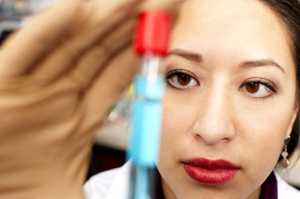History of Vaccine Safety
Vaccines are one of the greatest success stories in public health. Through use of vaccines, we have eradicated smallpox and nearly eliminated wild polio virus. The number of people who experience the devastating effects of preventable infectious diseases like measles, diphtheria, and whooping cough is at an all-time low. To ensure the continued success of vaccines in the United States, it’s crucial to make sure that vaccines are safe.
Before vaccines are approved by the Food and Drug Administration (FDA), they are tested extensively by scientists to ensure they are effective and safe. Vaccines are the best defense we have against infectious diseases; however, no vaccine is actually 100% safe or effective for everyone because each person’s body reacts to vaccines differently. [1, 2, 3]
As infectious diseases become less common, we hear less about the serious consequences of preventable illnesses like diphtheria and tetanus and more about the risks associated with vaccines. It’s good to be informed about health choices, but the reality is that Americans have never been healthier than we are today and vaccines have never been safer than they are today. The benefits of vaccines far outweigh the risks. As science continues to advance, we strive to develop safer vaccines and improve delivery to protect ourselves against disease more effectively. This overview focuses on vaccine research, how vaccines are licensed, and how we make sure vaccines are safe. [1, 2, 3]
National Childhood Vaccine Injury Act
During the mid-1970s, there was an increased focus on personal health and more people became concerned about vaccine safety. Several lawsuits were filed against vaccine manufacturers and healthcare providers by people who believed they had been injured by the diphtheria, pertussis, tetanus (DPT) vaccine. [4] Damages were awarded despite the lack of scientific evidence to support vaccine injury claims. [4] As a result of these decisions, liability and prices soared, and several vaccine manufacturers halted production. A vaccine shortage resulted and public health officials became concerned about the return of epidemic disease. To reduce liability and respond to public health concerns, Congress passed the National Childhood Vaccine Injury Act (NCVIA) in 1986. This act was influential in many ways. [4, 5]

- The National Vaccine Program Office (NVPO) was established to coordinate immunization-related activities between all Department of Health and Human Services (DHHS) agencies including the Centers for Disease Control and Prevention (CDC), Food and Drug Administration (FDA), National Institutes of Health (NIH), and the Health Resources and Services Administration (HRSA).
- The NCVIA requires health care providers who administer vaccines to provide a vaccine information statement (VIS) to the person getting the vaccine or his or her guardian. A VIS must be given with every vaccination including each dose in a multi-dose series. Each VIS contains a brief description of the disease as well as the risks and benefits of the vaccine. CDC develops VISs and distributes them to state and local health departments as well as individual providers.
- The NCVIA also requires health care providers to report certain adverse events (health effects occurring after immunization that may or may not be related to the vaccine) following vaccination to the Vaccine Adverse Event Reporting System (VAERS).
- Under the NCVIA, the National Vaccine Injury Compensation Program (NVICP) was created to compensate those injured by vaccines on a "no fault" basis.
- The NCVIA established a committee from the Institute of Medicine (IOM) to review the literature on vaccine reactions. This group concluded that there are limitations in our knowledge of the risks associated with vaccines. The group looked at 76 health problems to see if they were caused by vaccines. Of those, 50 (66%) had no or inadequate research to form a conclusion. [6, 7] Specifically, the IOM identified the following problems:
- Limited understanding of biological processes that underlie adverse events.
- Incomplete and inconsistent information from individual reports.
- Poorly constructed research studies (not enough people enrolled for the period of time).
- Inadequate systems to track vaccine side effects.
- Few experimental studies were published in the medical literature.
Significant progress has been made over the past few years to monitor side effects and conduct research relevant to vaccine safety.
Monitoring Vaccine Safety: Pre-Licensure
Before vaccines are licensed by the FDA, they are tested extensively in the laboratory and with human subjects to ensure their safety. First, researchers use computers to predict how the vaccine will interact with the human immune system. Then researchers test the vaccine on animals including mice, guinea pigs, rabbits, and monkeys.

After the vaccine completes these laboratory tests successfully, the FDA approves its use in clinical studies on human subjects. Participation in these studies is completely voluntary. Many individuals choose to contribute their time and energy for the advancement of science. Before they participate in research, all participants must demonstrate that they understand the purpose of the study and its potential risks. Volunteers agree to receive the vaccine and undergo any medical testing necessary to assess its safety and efficacy. [7]
Vaccine licensing is a lengthy process that may take 10 years or longer. The FDA requires that vaccines undergo three phases of clinical trials with human subjects before they can be licensed for use in the general public:
- Phase one trials are small, involving only 20 to 100 volunteers, and last only a few months. The purpose of phase one trials is to evaluate basic safety and identify very common reactions.
- Phase two trials are larger and involve several hundred participants. These studies last anywhere from several months to two years and collect additional information on safety and efficacy. Data gained from phase two trials can be used to determine the composition of the vaccine, how many doses are necessary, and a profile of common reactions.
- Unless the vaccine is ineffective or causes health problems, the trials are expanded to phase three, which involves several hundred to several thousand volunteers. Typically these trials last several years. Because the vaccinated group can be compared to those who have not received the vaccine, researchers are able to identify true reactions. [1, 3, 7, 8, 9]
If the clinical trials demonstrate that the vaccine is safe and effective, the manufacturer applies to the FDA for two licenses: one for the vaccine (product license), and one for the production plant (establishment license). During the application process, the FDA reviews the clinical trial data and proposed product labeling. In addition, the FDA inspects the plant and goes over manufacturing protocols to ensure vaccines are produced in a safe and consistent manner. Only after the FDA is satisfied that the vaccine is safe is it licensed for use in the general population. [8]
Monitoring Vaccine Safety: Post-Licensing
After a vaccine is licensed for public use, its safety is monitored continually. The FDA requires all manufacturers to submit samples from each vaccine lot prior to its release. In addition, the manufacturers must provide the FDA with their test results for vaccine safety, potency, and purity. Each lot must be tested because vaccines are sensitive to environmental factors like temperature, and can be contaminated during production. The FDA rarely has recalled vaccine lots, for concerns such as mislabeling, contamination during production, and potential manufacturing problems at a production plant. [8]
While clinical trials provide important information on vaccine safety, the data are somewhat limited because of the relatively small number (hundreds to thousands) of study participants. Rare side effects and delayed reactions may not be evident until the vaccine is administered to millions of people. Therefore, the federal government established a surveillance system to monitor adverse events following vaccination. This project is known as the Vaccine Adverse Event Reporting System (VAERS). In addition, large-linked databases containing information on millions of individuals have been created to study rare vaccine adverse events. [1, 3]
Learn more about systems used to monitor vaccine safety:
Vaccine Adverse Event Reporting System (VAERS)
Clinical Immunization Safety Assessment (CISA) Project
National Vaccine Injury Compensation Program
Improvements in Vaccine Safety
In the last decades, numerous changes in vaccine production and administration have reduced the number of side effects and resulted in safer vaccines.
- A more purified acellular pertussis (aP) vaccine has been licensed for use and has replaced the whole cell pertussis vaccine used in DTP (diphtheria, tetanus, pertussis vaccine). Several studies have evaluated the safety and efficacy of DTaP as compared to DTP and concluded DTaP is effective in preventing disease, and mild and serious side effects occurred less frequently when the DTaP vaccine was given. [3]
- Changes in the schedule of polio vaccines also have resulted in fewer reports of serious adverse events. In 1997, the Advisory Committee on Immunization Practices recommended a change in the vaccination schedule to include sequential administration of inactivated polio vaccine (IPV) and oral polio vaccine (OPV). [10] This sequential schedule was expected to produce a high level of individual protection against the disease caused by wild polio virus, while reducing by 50 to 70% vaccine-associated paralytic polio (VAPP) that occurs in 8–10 people a year who receive OPV. [10] Today, only IPV is on the recommended childhood immunization schedule.
The Future of Vaccine Safety
The importance of vaccine safety will continue to grow throughout the 21st century. The development and licensure of new vaccines will add to the already robust immunization schedule. Scientists may also perfect new ways of administering immunizations including edible vaccines and needleless injections. However they are formulated or delivered, vaccines will remain the most effective tool we possess for preventing disease and improving public health in the future.
References
- Chen RT, Hibbs B. Vaccine safety: Current and future challenges. Pediatric Annals 1998;27(7):445–455.
- Ellenberg SS, Chen RT. The complicated task of monitoring vaccine safety. Public Health Reports 1997;112(1):10–20.
- Centers for Disease Control and Prevention. (1997) "Epidemiology and prevention of vaccine-preventable diseases, vaccine safety" (chapter 15). Washington DC: Government Printing Office.
- Freed GL, Katz SL, Clark SJ. Safety of vaccinations: Miss America, the media, and public health. Journal of the American Medical Association 1996;276(23):1869–1872.
- Brink EW, Hinman AR. The vaccine injury compensation act: The new law and you. Contemporary Pediatrics 1989;6(3):28–32, 35–36, 39, 42.
- Howson CP, Howe CJ, Finchere HV, eds. Institute of Medicine. Adverse effects of pertussis and rubella vaccines: A report of the Committee to Review the Adverse Consequences or Pertussis and Rubella Vaccines. Washington, DC: National Academy Press, 1991.
- Stratton KR, Howe CJ, Johnsion RB, eds. Adverse events associated with childhood vaccines; Evidence bearing on causality. Washington, DC; National Academy Press, 1994.
- Understanding Vaccines;[PDF - 393 KB]. Bethesda, MD; National Institutes of Health, 2008.
- Food and Drug Administration (FDA).
- Advisory Committee on Immunization Practice (ACIP). Poliomyelitis prevention in the United States: Introduction of a sequential vaccination schedule of inactivated poliovirus vaccine followed by oral poliovirus vaccine.MMWR 1997;46(RR-3);1–25.
- Page last reviewed: September 29, 2015
- Page last updated: September 29, 2015
- Content source:


 ShareCompartir
ShareCompartir